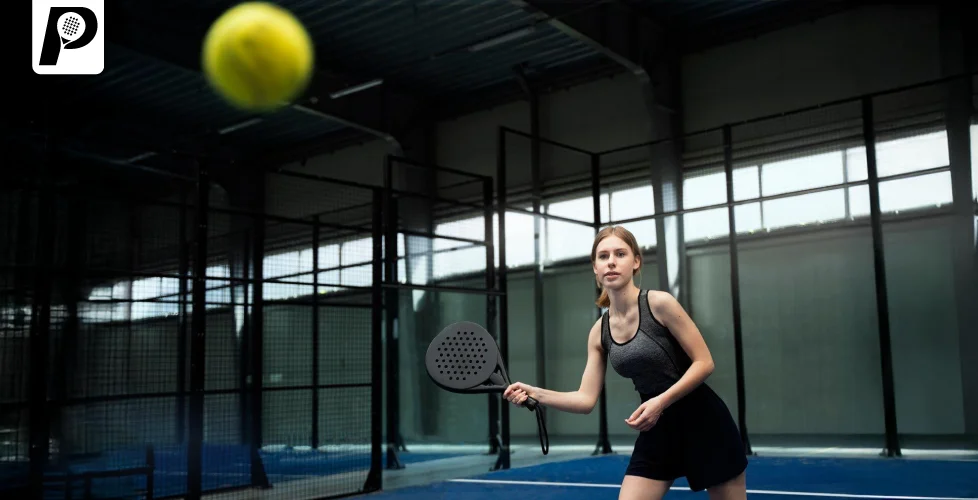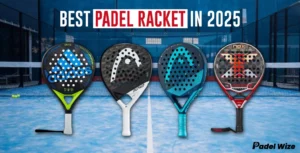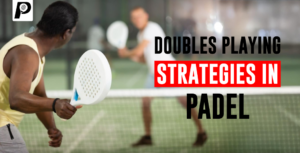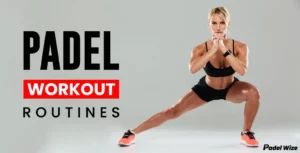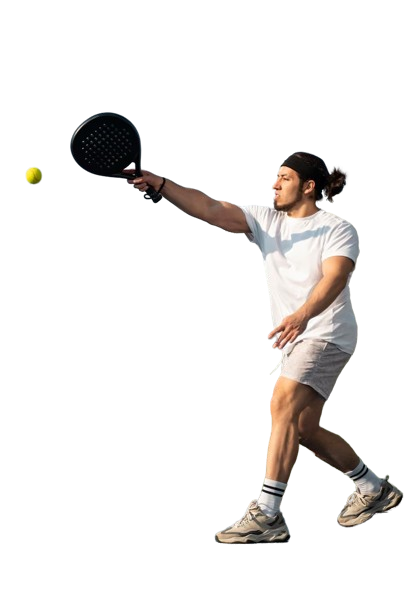Padel, a rapidly rising racket sport with roots in tennis and squash, has captured the attention of sports enthusiasts worldwide. The game is played in doubles on an enclosed court, typically about one-third the size of a tennis court, with the added twist of being able to use the glass walls as part of the play, much like in squash. Since it was first introduced, padel has become popular for its accessibility, fun factor, and ability to cater to players of all skill levels. But Who is Padel Sports Suitable For, and why has it resonated with such a diverse range of people?
In this detailed guide, we’ll explore Who is Padel Sports Suitable For? and the groups that can benefit most from padel, explain how it fits into different lifestyles, and demonstrate why it’s a sport for almost anyone.
Read more: Mastering the Game at Your Padel Club: Tips and Techniques
Who is Padel Sports Suitable For?
Who is Padel Sports Suitable For? Padel is ideal for people of all ages and skill levels, offering a fun and social way to stay active, whether you’re a beginner or an experienced athlete. so now lets explore..
1. Padel for All Ages
Unlike some sports that require a high level of physical endurance or technical skills, padel is accessible to a wide range of age groups. Whether you’re a child just learning to play sports, an adult looking for a new hobby, or a senior aiming to stay active, padel can offer something for you.
For Children and Teenagers
Padel is an excellent introduction to racket sports for kids. The smaller court size and slower pace compared to tennis make it a forgiving environment for young players. It allows children to improve their hand-eye coordination, motor skills, and ability to focus in a fun and supportive atmosphere.
Additionally, many padel clubs offer structured training programs for kids, providing coaching that helps them develop both their technical skills and their love for the game. Because padel is played in doubles, it also teaches kids teamwork and communication—skills that can be valuable both on and off the court.
For Adults
Adults often seek sports that offer a balance between physical exercise and fun. Padel hits the sweet spot by providing a moderate workout without the exhaustion that can come from more intense sports. Adults can enjoy a full-body workout through running, quick reflexes, and racket handling without the extreme physical demands of sports like football or marathon running.
Moreover, padel is perfect for adults who may have limited free time. Matches are typically shorter than those of tennis, so it’s easier to fit a game into a busy schedule, whether during lunch breaks or weekends. It’s also a great way to unwind after a long day at work and socialize with friends or colleagues.
For Seniors
As people age, finding sports that are both enjoyable and low-impact becomes increasingly important. Padel offers a slower pace compared to more physically demanding activities like squash or soccer. Seniors can maintain an active lifestyle without putting undue stress on their joints or risking injury.
The enclosed court and doubles format also allow seniors to play at a relaxed pace, with plenty of opportunities for socializing between rallies. The ability to play with partners of similar skill levels ensures that games remain competitive yet fun.
Read more: How to Improve Your Padel Smash Game: A Complete Guide
2. Skill Levels: From Beginners to Advanced Players
One of the most appealing aspects of padel is how quickly it can be learned. Unlike sports that take years to master, padel is beginner-friendly while still providing depth and complexity for more experienced players.
For Beginners
Padel’s smaller racket, compared to tennis, makes it easier for beginners to control their shots. The walls around the court also allow for longer rallies, which can be less frustrating for new players. Because the ball is typically in play for longer, beginners don’t need to worry about missing every shot or constantly chasing the ball.
The learning curve for padel is relatively gentle, with players able to enjoy a fun game within their first few sessions. Many clubs offer coaching or beginner-friendly events to help new players feel comfortable on the court.
For Intermediate Players
As players progress, padel introduces more tactical elements. The court size and use of walls mean positioning is key, and understanding when to attack or defend becomes more critical. Intermediate players can begin focusing on improving their footwork, shot placement, and strategy.
At this level, players often start joining leagues or playing in friendly competitions, where they can test their skills against others and continue to improve in a supportive environment. Padel’s fast pace also helps intermediate players enhance their reflexes and decision-making skills.
For Advanced Players
For those who are highly competitive or have experience in racket sports like tennis or squash, padel offers a rewarding challenge. Advanced players enjoy the strategic aspects of using the court’s glass walls, playing lob shots, and varying their pace to outwit opponents.
At this level, padel matches can become very intense, requiring quick reflexes, physical stamina, and precision. Advanced players often participate in high-level competitions or tournaments, honing their skills and pushing the boundaries of their performance.
Read more: Top Strategies for Winning the Padel Smash Game
3. Fitness and Health Benefits
Padel offers an effective workout for those looking to improve their fitness. The sport provides cardiovascular benefits, muscle strengthening, and flexibility training, all while being a low-impact form of exercise.
Cardiovascular Health
During a typical padel match, players move continuously, either sprinting across the court to return shots or positioning themselves strategically for the next point. This constant movement increases heart rate and burns calories, making it an excellent form of cardiovascular exercise. Over time, regular padel play can improve endurance and help manage weight.
Strength Training
Padel engages various muscle groups, including the arms, shoulders, core, and legs. Each shot requires a combination of strength and precision, helping players tone their muscles. The constant shifting and changes in direction help build lower body strength, while the overhead shots and smashes engage the upper body.
Flexibility and Agility
Agility is a core component of padel, as players must move quickly around the court, change direction, and reach for shots. This improves coordination and balance, as well as overall flexibility. These movements enhance physical agility, which can translate to better performance in other activities and sports.
Low-Impact Exercise
For individuals concerned about joint health, padel is ideal. Unlike running or other high-impact sports, the smaller court and more controlled movement reduce the strain on knees and ankles. This makes it an appealing option for people who may have experienced injuries in the past or who need a gentler form of exercise.
Read more: How to Play Padel: Common Mistakes and How to Avoid Them
4. Social Aspects: Ideal for Group Play
One of the reasons padel has gained so much popularity is its social nature. It’s typically played in doubles, meaning that each game involves four players, fostering interaction and teamwork.
For Friends and Family
Padel is perfect for groups of friends or families looking for a fun and engaging activity. Because it’s accessible to players of different skill levels, it’s a great sport for mixed-ability groups. Whether it’s a casual game among friends or a more competitive match between family members, padel provides a fun way to bond.
For Social Clubs and Leagues
Padel is often played in clubs where social events, leagues, and tournaments bring people together. Many players find that the social aspect of padel is just as important as the physical one. These clubs frequently organize friendly matches, training camps, and events that foster a sense of community.
For people looking to expand their social circle or find a new hobby, padel is an excellent option. It’s a great way to meet new people while staying active.
Read more: Padel Rules and Regulations: How to Play Like a Pro
5. Couples and Families: A Shared Activity
Padel is a popular choice for couples and families who want to spend time together while engaging in physical activity.
For Couples
Couples often find that padel provides a unique way to connect. The teamwork required to win a doubles match can help improve communication and cooperation between partners. Many couples enjoy playing in local leagues or simply having fun on the weekends.
For Families
Padel is accessible to people of all ages, making it a great family activity. Parents can play with their children, and grandparents can join in too. Families often find that padel offers a way to bond over a shared interest, while also staying fit and active together.
Read more: What is Padel Sport? Key Facts and Tips for New Players
6. Corporate and Team Building Events
In the corporate world, padel is becoming a go-to sport for team-building events. Its blend of physical activity, teamwork, and strategy makes it ideal for fostering collaboration among colleagues.
Improving Teamwork
Since padel is played in pairs, it requires constant communication and coordination between partners. Corporate teams can benefit from the game’s ability to teach teamwork and improve interpersonal skills in a fun, non-competitive environment.
Stress Relief
Corporate jobs can be stressful, and padel offers a great outlet for relieving that tension. A game of padel can be a fantastic way to unwind, clear your head, and return to work feeling refreshed and energized.
Read more: Padel Tennis vs Pickleball: Equipment, Rules, and Play Styles
7. Athletes from Other Sports
For athletes from different sports who are looking for a new challenge, padel offers an exciting alternative. It’s especially appealing to those who enjoy racket sports but want to try something different.
For Tennis or Squash Players
Padel shares many similarities with tennis and squash but introduces new elements, such as the use of the walls and a smaller court size. Tennis players may find the smaller, lighter racket easier to manage, while squash players will appreciate the strategic use of space and the glass walls. Both groups will enjoy the challenge of adapting their skills to padel’s unique dynamics.
For Other Athletes
Athletes from sports like football, basketball, or rugby often take up padel to stay active and improve their agility, reflexes, and coordination. The strategic nature of padel, combined with its physical demands, makes it a good cross-training sport for athletes looking to improve their performance in other areas.
Read more: How to Care for Your Padel Balls for Longevity
8. Those Looking for a New Hobby
Finally, after exploring Who is Padel Sports Suitable For? Padel is an excellent option for anyone looking to try a new hobby or activity. Its combination of physical exercise, mental strategy, and social interaction makes it a fulfilling and enjoyable pastime.
Read more: How to Improve Your Game with the Right Padel Racquet
Conclusion
Padel is a versatile, inclusive, and enjoyable sport that is suitable for people of all ages, skill levels, and backgrounds. Whether you’re looking for a fun way to stay fit, a new challenge, or a social activity to enjoy with friends and family, padel offers something for everyone. Its easy-to-learn rules, fast-paced gameplay, and friendly atmosphere make it a perfect choice for anyone looking to enjoy the benefits of an active lifestyle while having fun.
So, Who is Padel Sports Suitable For? Quite simply, everyone. Whether you’re young or old, a beginner or an experienced athlete, padel has something to offer. Grab your racket, find a partner, and hit the court—you might just find your new favorite sport!

